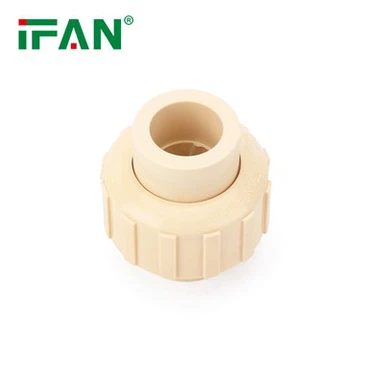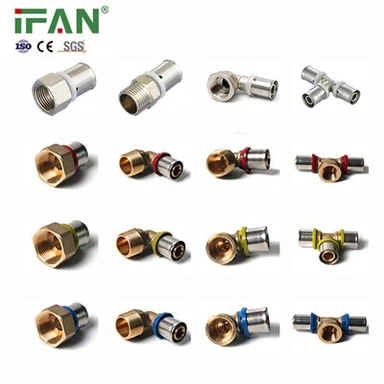PEX Pipes: Cleaning and Disinfection Methods
Mar 18, 2025
Introduction
PEX (cross-linked polyethylene) pipes have become increasingly popular in residential and commercial plumbing systems due to their durability, flexibility, and cost-effectiveness. However, maintaining the cleanliness and hygiene of these pipes is crucial to ensure the safety and quality of the water flowing through them. This article explores various cleaning and disinfection methods for PEX pipes, highlighting their effectiveness, ease of application, and potential limitations.
Chemical Disinfection
Chlorination
Chlorination is one of the most commonly used methods for disinfecting PEX pipes. Chlorine is a powerful oxidant that effectively kills bacteria, viruses, and other microorganisms present in the water system. For PEX pipes, chlorination can be performed by introducing chlorine solution into the system and allowing it to circulate for a specified period. The concentration and contact time of chlorine should be carefully controlled to avoid corrosion of pipe materials or the formation of harmful byproducts. After disinfection, the system should be flushed thoroughly to remove any residual chlorine.
Ozonation
Ozonation is an alternative chemical disinfection method that uses ozone, a highly reactive gas, to inactivate microorganisms. Ozone is generated on-site using an ozone generator and introduced into the water system. It is particularly effective against resistant organisms and does not produce harmful disinfection byproducts. However, the use of ozone requires specialized equipment and training due to its toxic properties and potential health hazards. Additionally, the half-life of ozone in water is relatively short, necessitating careful monitoring and control of the disinfection process.

Mechanical Cleaning
Flushing
Flushing is a simple yet effective mechanical cleaning method for PEX pipes. It involves running a large volume of water through the system at high velocity to dislodge and remove debris, sediment, and biofilm build-up. Flushing can be performed using household water pressure or specialized flushing equipment. Regular flushing helps maintain the cleanliness of the pipes and prevents the accumulation of contaminants. However, it may not be sufficient for complete disinfection, particularly in systems with heavy contamination or biofilm formation.
Pigging
Pigging is a more advanced mechanical cleaning technique that uses a specialized device called a pig to clean the interior walls of the pipes. Pigs are designed to scrape, brush, or scrape and brush the pipe walls, depending on their configuration. They are typically made from materials that are compatible with PEX, such as polyurethane or nylon. Pigging is particularly effective for removing heavy build-ups of sediment, grease, and biofilm. However, it requires specialized equipment and training, and may not be suitable for all types of PEX pipes or installations.
Thermal Disinfection
Hot Water Sanitization
Hot water sanitization is a thermal disinfection method that takes advantage of the heat resistance of PEX pipes. By raising the temperature of the water in the system to a specified level (typically above 70°C or 158°F) and maintaining it for a certain period, microorganisms can be inactivated. This method is particularly effective against bacteria and viruses but may not be as effective against spores or resistant organisms. Hot water sanitization can be performed using a hot water heater or specialized heating equipment. It is important to note that excessive heat can damage certain components of the plumbing system, such as gaskets and seals, so care must be taken to avoid overheating.

Combination Methods
Chemical-Mechanical Combination
Combining chemical and mechanical cleaning methods can provide a more comprehensive approach to cleaning and disinfecting PEX pipes. For example, using a chlorine solution in conjunction with flushing can enhance the removal of contaminants and biofilm while ensuring complete disinfection. Similarly, pigging followed by chlorination or ozonation can help remove heavy build-ups and ensure thorough disinfection of the system. Combination methods require careful planning and coordination to avoid adverse interactions between chemicals and mechanical devices, as well as to minimize disruption to the water system. IFAN factory 30+ years manufacture experience support color /size customization support free sample.Welcome to consult for catalog and free samples.This is our Facebook Website:www.facebook.com,Click to watch IFAN's product video.Our IFAN products from quality to price are your best choice, welcome to buy!
Advanced Technologies
Recent advancements in cleaning and disinfection technologies have introduced new options for maintaining the hygiene of PEX pipes. UV-C light disinfection, for example, uses ultraviolet radiation to inactivate microorganisms without the use of chemicals. UV-C systems can be installed in-line or as point-of-use devices and are particularly suitable for small to medium-sized systems. Other advanced technologies include high-pressure water jetting, which uses highly pressurized water to clean the interior walls of the pipes, and electrochemical disinfection, which uses electrical currents to generate reactive species that inactivate microorganisms. These technologies offer new possibilities for maintaining the cleanliness and hygiene of PEX pipes but may come with higher costs and complexity.
Conclusion
Maintaining the cleanliness and hygiene of PEX pipes is essential for ensuring the safety and quality of the water flowing through them. Various cleaning and disinfection methods are available, each with its own advantages and limitations. Chemical disinfection, mechanical cleaning, thermal disinfection, and combination methods all play a role in maintaining the hygiene of PEX pipes. As technology advances, new options such as UV-C light disinfection and electrochemical disinfection are becoming available. Choosing the right method or combination of methods depends on the specific needs of the water system, including the type and extent of contamination, the size and complexity of the system, and the availability of resources and expertise. Regular monitoring and maintenance are crucial to ensure the long-term performance and hygiene of PEX pipes.






